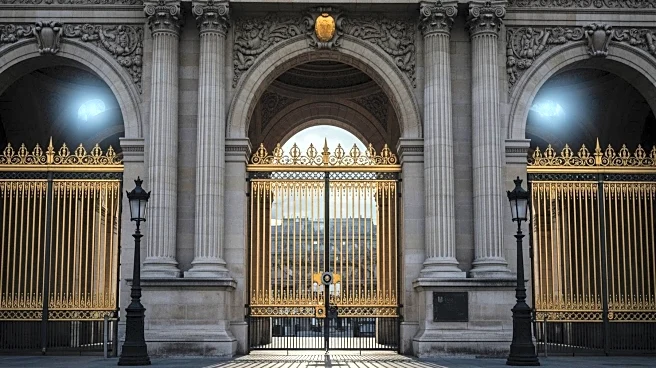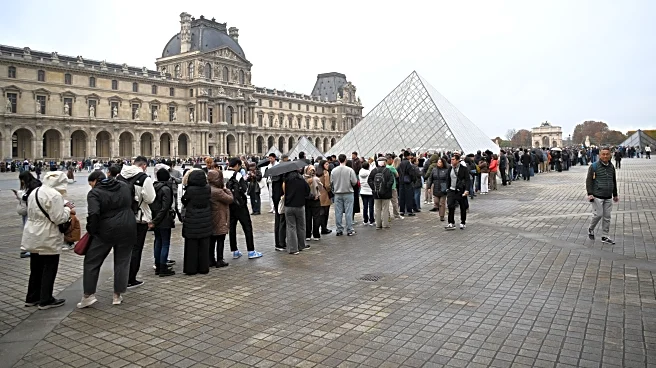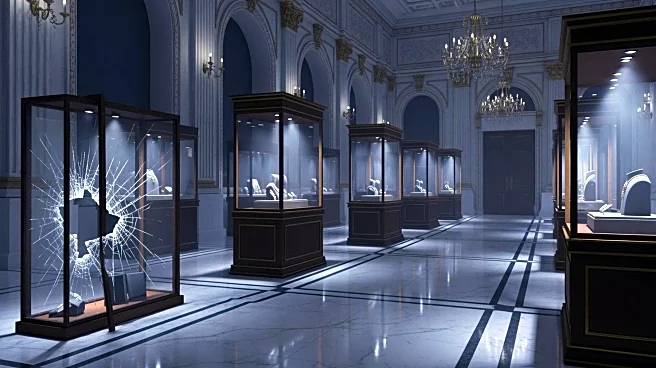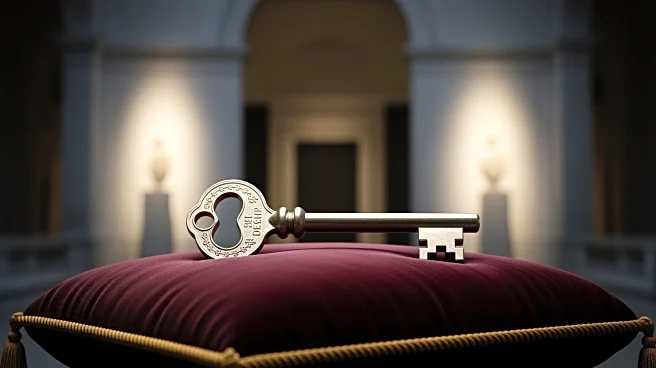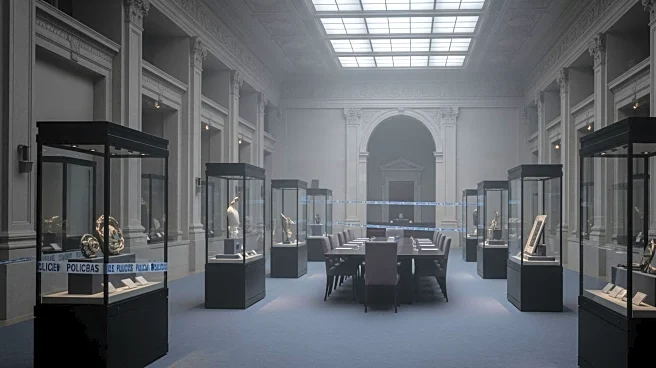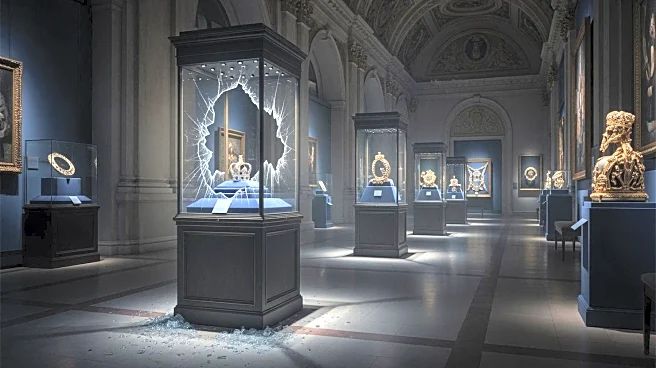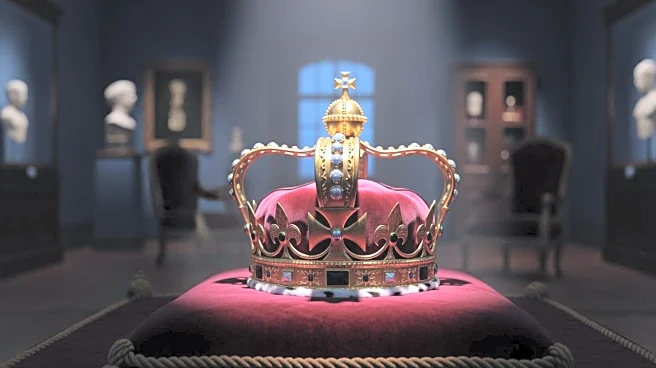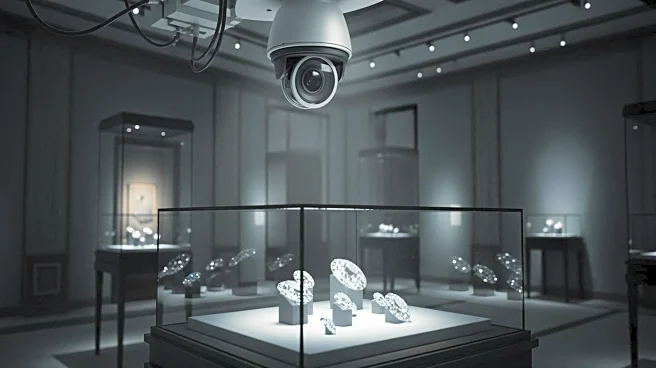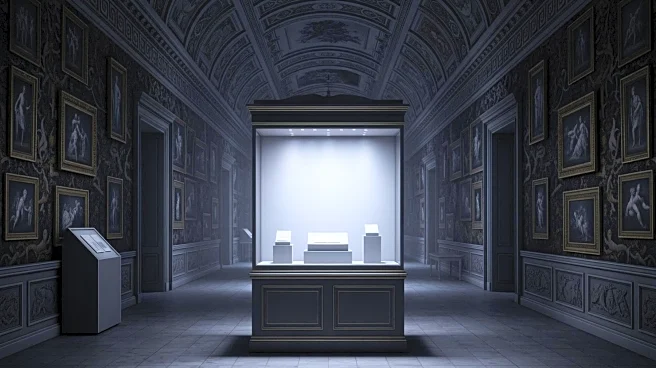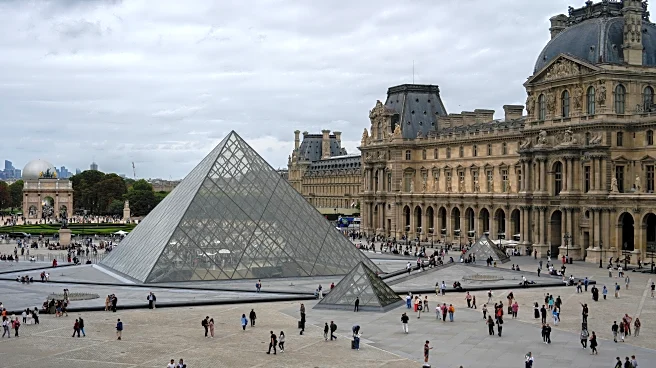What's Happening?
The Louvre Museum in Paris remains closed for a second consecutive day following a daring theft of crown jewels. The heist occurred on Sunday morning when thieves used a crane-type lift to break into the museum
through a window, subsequently smashing display cases in the Apollo Gallery. The stolen jewelry is described as having 'inestimable value.' The thieves made their escape on motorcycles or scooters, according to officials. The closure has left many visitors disappointed, with queues forming outside the museum. French Culture Minister Rachida Dati labeled the robbery as the work of 'professionals,' noting the operation was completed in just four minutes without any reported injuries.
Why It's Important?
The theft at the Louvre, one of the world's most visited museums, highlights vulnerabilities in security systems at high-profile cultural institutions. The incident raises concerns about the protection of priceless artifacts and the effectiveness of current security measures. The ease with which the thieves executed the heist has shocked many, including art historians familiar with the museum's operations. This event could prompt a reevaluation of security protocols not only at the Louvre but at other museums globally, potentially leading to increased security investments and changes in how valuable items are displayed.
What's Next?
The Louvre's management is likely to conduct a thorough investigation into the security breach and assess the need for enhanced protective measures. French authorities are expected to intensify efforts to recover the stolen jewels and apprehend the perpetrators. The museum's closure may continue until security is assured, affecting tourism and visitor plans. The incident may also lead to discussions among cultural institutions worldwide about balancing historical authenticity with modern security needs.
Beyond the Headlines
The heist underscores the ethical dilemma faced by museums in preserving historical accuracy while ensuring the safety of their collections. The use of original display cases, as seen in the Louvre, can compromise security but is often preferred for authenticity. This event may spark debates on the prioritization of security over historical preservation, potentially influencing future museum practices.
